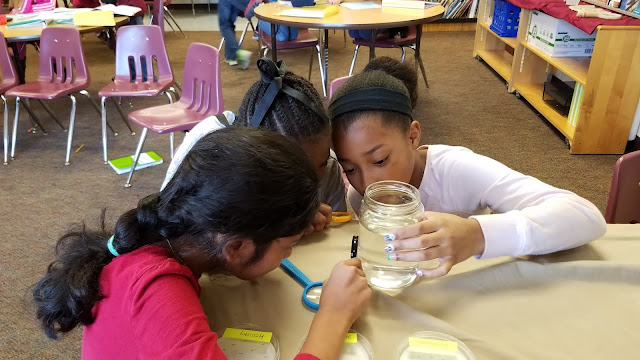Systems: This month in our Gray Area mystery, students conducted chemical and biological tests for phosphates and looked at the negative impacts of algal blooms on water life. They also evaluated our chromatogram results for the oil found in the bay. This brought us to the end of our suspect list having investigated acid rain, chlorine, sediments, phosphates, and oil as possible culprits in our mystery. We had an emergency board meeting to go over all the evidence and draw conclusions about the most likely reasons for the dying fish. Students justified their votes with evidence and found that the answer wasn't as cut and dry as they may have thought. As in real life, with so many elements at play, there is often a lot of "gray area" when it comes to making the best choices for us and our environment. We also looked at possible solutions to the problems we've discovered and pros and cons of those as well. I was proud of all of the students’ work, ideas, ability to think through different layers of the issues, and the connections they made to our overarching systems theme.
We finished with a little year-in-review game. Students answered some systems questions using Kahoot and their responses earned them some positive or not-so-positive inputs to their forest and pond snack ecosystems. A little acid rain with that dirt dessert?!? :)
M^3 (Mentoring Mathematical Minds) Digging for Data: Our latest math focus has been on surveys. Students have learned how to write effect survey questions, conducted their own electronic surveys using Google forms, and finally selected appropriate ways to organize and represent their survey results.
Critical and Creative Thinking: I am so excited by the growth I have seen during our morning morphic thinking exercises. Students are consistently expressing their original ideas in clear and well constructed responses. We have also made great connections as we finished our novel study of Listening to Crickets. They continue to enjoy the brain stretching challenges we try to work into our days. You can encourage them to beat summer boredom and keep up their skills using these websites!
Thanks for an amazing year!






















































